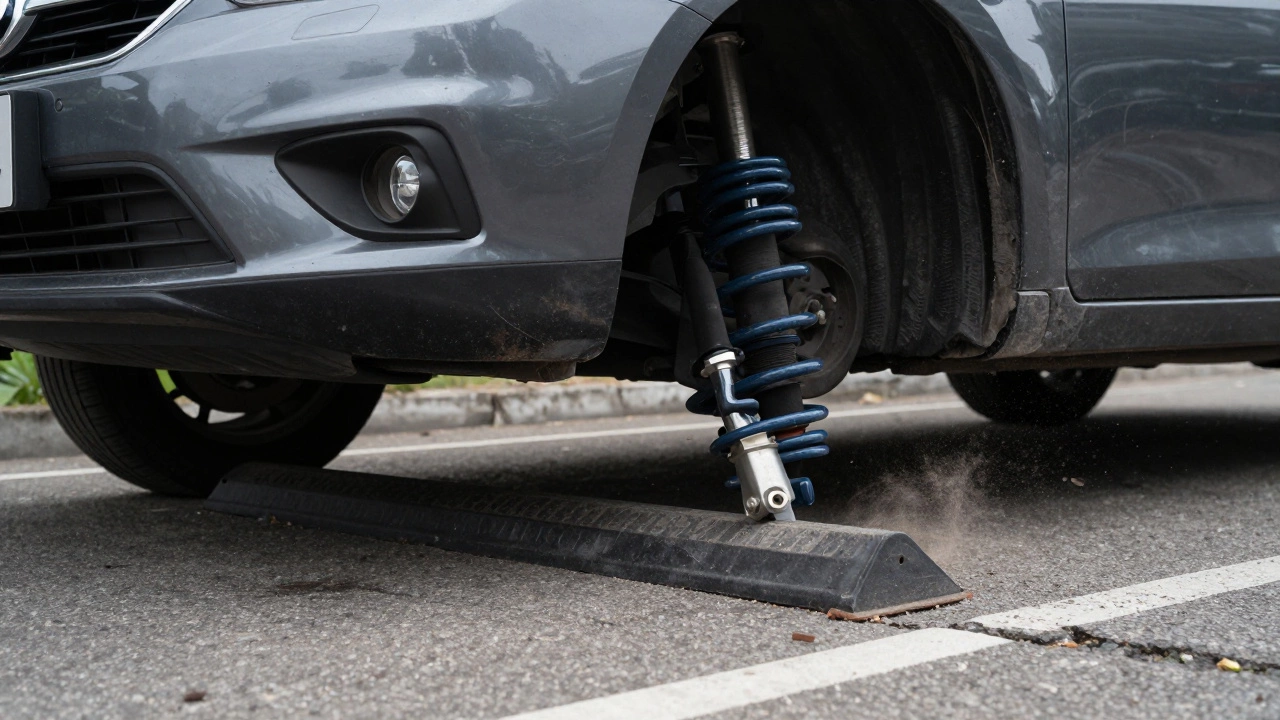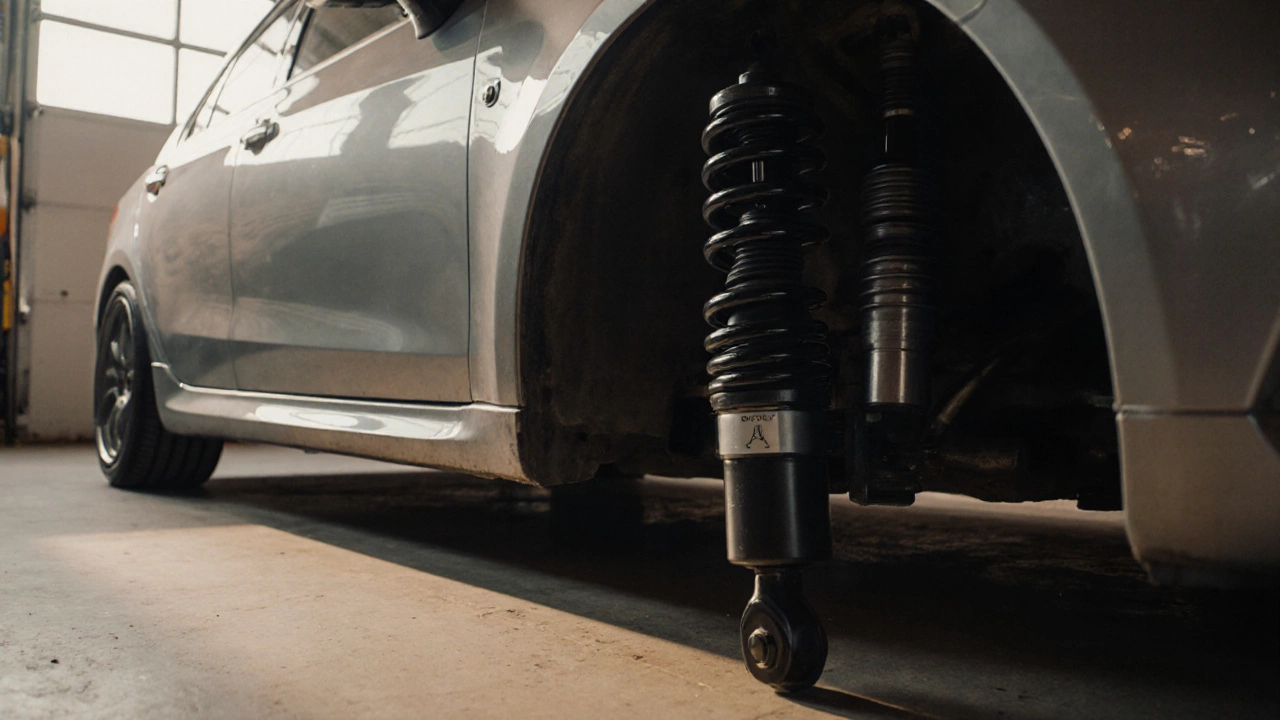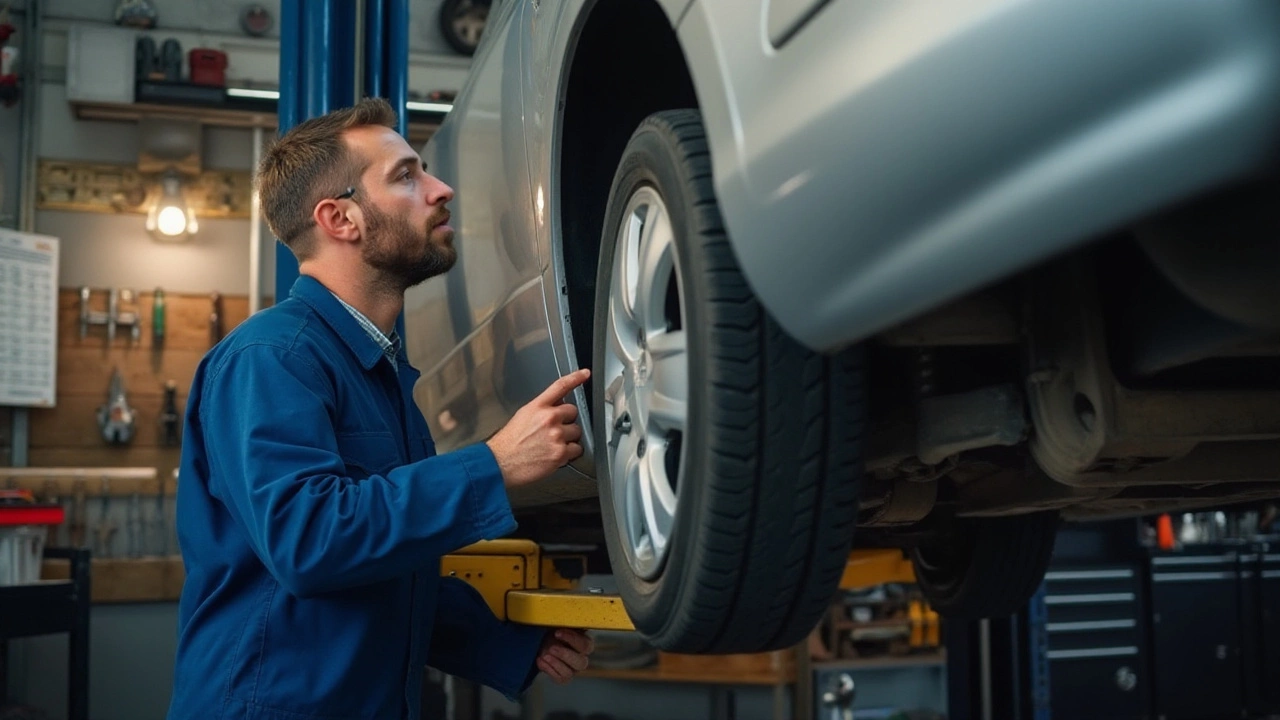Lowering Springs: What They Do and How to Use Them Right
If you’ve ever wanted a sportier look or sharper cornering, lowering springs are often the first thing you’ll hear about. They’re just shorter, stiffer coil springs that replace the factory ones, pulling the car closer to the ground. The result is a lower stance, less body roll, and a more aggressive appearance. But they’re not a magic fix – they change the whole suspension geometry, so you need to know what you’re getting into.
Why Drivers Choose Lowering Springs
Most people pick lowering springs for two reasons. First, the visual impact: a car that sits a few centimeters lower looks sportier without the bulky look of a body kit. Second, the handling boost. Shorter springs reduce the distance the wheels travel when you turn, which means less sway and more confidence in corners. The trade‑off is a firmer ride and a higher chance of bottoming out on speed bumps or potholes.
How to Pick the Right Set for Your Ride
Start with your car’s make and model. Manufacturers and aftermarket brands list specific spring rates for each vehicle, so don’t guess. Look for the amount of drop the springs provide – common values are 10mm, 20mm, or 30mm. If you only want a modest stance change, go for the smallest drop. For a truly low‑rider look, a 20mm–30mm drop is typical.
Next, consider your driving style. Daily drivers benefit from a softer spring rate that still lowers the car but keeps the ride comfortable. Track cars can handle stiffer rates because comfort isn’t a priority. Also, check whether you need a full‑set (front and rear) or just front springs; a balanced setup avoids uneven handling.
Don’t forget alignment. Lowering the car changes the suspension angles, so a proper alignment (camber, caster, toe) is essential after the install. Skipping this step can lead to uneven tire wear and a squeaky steering feel.
Step‑by‑Step Installation Tips
1. **Gather tools** – you’ll need a jack, jack stands, socket set, spring compressors (or a press), and a torque wrench.
2. **Lift the car safely** – jack up one corner, support it with a stand, and remove the wheel.
3. **Compress the old spring** – use a spring compressor to relieve tension before removing the strut assembly.
4. **Swap the springs** – take out the old spring, install the new lowering spring, and re‑assemble the strut. Make sure the spring sits correctly on the seat and mount.
5. **Re‑torque bolts** – follow the manufacturer’s torque specs. Over‑tightening can damage the strut, while under‑tightening can let it loosen.
6. **Repeat for the other side** – keep the car level and balanced.
7. **Get an alignment** – even a quick shop check will set the camber and toe back within safe limits.
When you’re done, take a short test drive. Listen for clunks, feel for wobble, and check tire wear after a few hundred miles. If anything feels off, revisit the installation or have a pro look at it.
Common Mistakes and How to Avoid Them
‑ **Skipping spring compression** – never remove a spring without a compressor; it’s dangerous and can damage components.
‑ **Using the wrong drop amount** – a 30mm drop on a daily driver can make the ride harsh and increase the risk of hitting the bumper.
‑ **Ignoring alignment** – even a small change in ride height throws the geometry off. Alignment is non‑negotiable.
‑ **Not checking clearance** – measure the distance from the tire to the fender and wheel well before you buy. Some cars need a slight wheel trim or different offset wheels.
By staying aware of these pitfalls, you’ll enjoy the sleek look and tighter handling without costly surprises.
Maintaining Your Lowered Car
After the install, keep an eye on your shocks and bushings. Lowering springs put extra stress on them, so they may wear faster. Inspect for leaks, cracks, or loose bolts every few thousand miles. Also, rotate your tires regularly to even out wear caused by changed camber angles.
Finally, remember that a lower car collects more road debris and water splashes. Keep the undercarriage clean, especially after off‑road trips, to prevent rust.
Lowering springs can give your car a fresh, aggressive stance and improve cornering confidence, but they require careful choice, proper installation, and routine checks. Follow these tips, and you’ll get the look you want without sacrificing safety or reliability.

Can I Put Lowering Springs on Stock Shocks? What You Need to Know Before You Lower Your Car
You can install lowering springs on stock shocks, but it's not safe or smart. Learn why this combo causes premature wear, harsh rides, and alignment problems-and what to do instead.

Are Lowering Springs Better Than Stock? Real-World Pros and Cons
Lowering springs give your car a sleek look and better cornering, but they can hurt ride quality, tire wear, and ground clearance. Here's when they're worth it - and when to stick with stock.

Can You Use Lowering Springs with Stock Shocks? Pros, Cons & Guide
Learn if you can safely combine lowering springs with stock shocks, see the pros and cons, and get practical installation tips, alignment advice, and when to upgrade your dampers.

How to Lower Your Car by 2 Inches Safely and Effectively
Learn how to lower your car by exactly 2 inches using lowering springs, coilovers or air kits. Step‑by‑step guide, cost comparison, safety tips, and FAQ for a safe, stylish drop.

Lowering Springs Only: Can You Drop Your Car’s Ride Height?
Learn if just swapping to lowering springs can drop your car, how much height you’ll lose, pros and cons, installation steps, and when extra adjustments are needed.

Can You Adjust Ride Height with Lowering Springs? Practical Facts and Tips
Thinking about lowering your car to get that sporty look? This article breaks down whether you can actually adjust your ride height when using lowering springs, how they work, and what you need to consider before you make any changes. Expect clear facts, helpful tips, and real-world advice for safe, practical suspension mods. You'll also learn about different suspension setups and which option might suit your needs. No complicated jargon—just the info you actually need.

Are Lowering Springs Bad for Stock Shocks?
Thinking of dropping your car with lowering springs but keeping those stock shocks? Find out how this combo actually behaves. This article uncovers what really happens to ride comfort, handling, and longevity. We'll talk about real-world effects, show you what to expect in the long run, and give tips if you want to go low without blowing your budget. You'll end up knowing if mixing lowering springs with factory shocks is worth it or a shortcut to problems.

Do Lowering Springs Reduce Body Roll?
Lowering springs can transform your vehicle's handling by reducing body roll. Discover what body roll is and how these springs manage it, dive into installation tips, understand the pros and cons, and learn what to consider before making a car suspension upgrade.

Are Lowering Springs Good for Daily Driving?
Wondering if lowering springs are a smart choice for your everyday drive? This article explores how these modifications affect your car’s handling and ride comfort. Learn about the potential advantages and downsides, including improved cornering and possible ride harshness. Find practical tips on what to consider before making the switch. A must-read for anyone looking to lower their vehicle without sacrificing daily usability.

Safest Ways to Lower a Car: A Guide to Lowering Springs
Lowering a car isn't just about aesthetics—it's about improving performance and maintaining safety. This article delves into the safest methods to lower a car using lowering springs. Learn the best practices, potential pitfalls, and helpful tips to enhance both style and handling without compromising safety.

Do Lowering Springs Affect Your Car's Suspension System?
Lowering springs can transform your vehicle's aesthetic and performance. But what do they do to your suspension system? This article explores the impact of lowering springs on your car, weighing the pros and cons. From understanding the mechanics behind them to practical maintenance tips, discover how lowering springs could change your driving experience, for better or worse.

Are Lowering Springs Safe to Cut? An In-Depth Look
Cutting lowering springs might seem like a quick fix to achieve your desired ride height, but is it safe? This practice can greatly impact your vehicle's safety, handling, and overall performance. By exploring the technical aspects, potential risks, and tips, this article aims to provide you with a comprehensive understanding of what cutting lowering springs entails. Learn what's at stake and how to achieve a safe, customized look for your vehicle without risking your safety or that of others on the road.